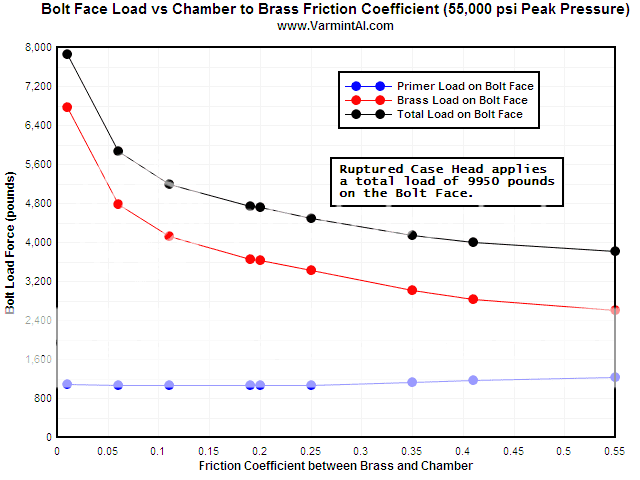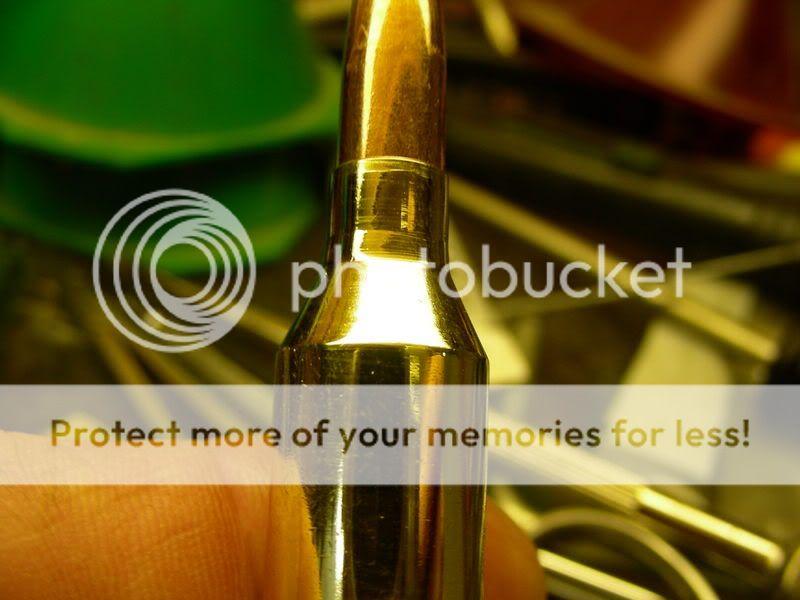Here is a better answer in plainer English from Varmint Al's site
Rifle Chamber Finish & Friction Effects on Bolt Load and Case Head Thinning Calculations done with LS-DYNA
showing bolt thrust with varying Coefficients of Friction
"CONCLUSION.... A polished or low friction chamber decreases the plastic strain near the case head and reduces the chance of case head separation on subsequent reloads.
This chart summarizes the bolt load vs Coefficient of Friction between the brass case and the 416 stainless steel chamber's walls. A rough chamber might reduce the bolt load by 1000 pounds but increase the plastic strain in the brass case near the web. Rough chamber finish and/or excessive head space can cause "case head thinning" that eventually results in case head separation on subsequent reloads."
Here is a list of CofF
Friction Coefficient Tests of 416 Stainless Steel on Cartridge Brass
Estimated coefficients of friction used in the Rifle Chamber Friction Analysis
Estimated/Measured Coefficient of Friction (u) Comments Maximum Plastic Strain
(%) Cartridge Case Wall Radial Thinning (inch) Maximum Bolt Face Load (lbs)
0.55 Very rough chamber, rough reamer finish with tool marks 14.39 0.006054 4435
0.41/0.37 Rough chamber finish, 320 grit finish (200 grit) 13.42 0.006328 4386
0.35/0.29 Smooth chamber, 600 grit 12.87 0.006046 4639
0.25/0.27 Smooth chamber, crocus cloth or smoother 11.10 0.005415 4477
0.19/0.19 Polished chamber Flitz 9.69 0.004858 4565
0.11* Probably not possible: Polished chamber, polished brass with grease 7.92 0.004481 4787
0.01 Friction this low is probably not physically possible and would be dangerous 14.17 0.009328 (case head expansion that could cause the case head to rupturing) 7656
0.00 If Case Head Separation (Hand calculation
f = pressure * area) 8785
so I would think your steel wooled cases would not have a coefficient of much less than .3 which would mean you have no chance of increasing bolt thrust to any degree discernible.
After some study I have no problem with polishing cases with Flitz for preservation of the finish and easier chambering
which might put me near .2 coefficient but still not a problem.
I don't have any case head separations (only one a long time ago) because I resize to minimal headspace but given the option of stressing the case with a high coefficient of friction or putting a minimal amount of additional bolt thrust on an action an bolt built to take the pressure, I would choose the latter.
YMMV


